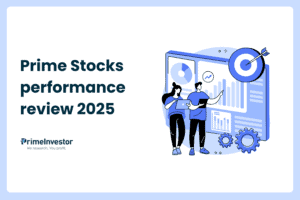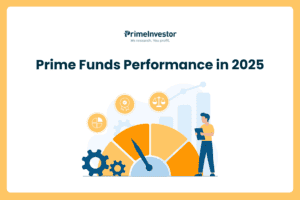When SEBI defined mutual fund categories in 2017 and capped funds per category, AMCs pivoted to thematic funds—where no such restrictions existed. This led to broad-based diversified funds packaged under expansive themes.

Once an AMC created an original theme, others quickly followed with competing offerings. ‘Opportunity funds,’ ‘Business Cycle’ funds, and ‘ESG’ funds exemplify this trend. This report examines another emerging theme with recent launches: Innovation funds. Currently, 11 such funds exist, most launched since late 2023, with less than two years of performance history.
While return data is limited, we still have portfolio-level data that helps understand what these funds seek to do. Therefore, here’s what we will look into:
- What defines ‘innovation’ in these funds
- How they are different from other diversified funds such as flexicap
- Where innovation funds tend to invest
- Volatility and risks in these funds
What innovations funds are
Innovation funds invest in companies embracing cutting-edge business models or technologies across operations, customer acquisition, and product development. They target potential disruptors and transformative businesses.
While names like Eternal (Zomato) or Nykaa might come to mind, innovation extends beyond digital natives—encompassing how traditional companies reinvent operations, develop products, and climb the value chain. These diverse innovation forms guide the funds’ stock selection strategy. Here’s how it is perceived in a few sectors:
- Financials: Adopting digital initiatives in both lending and deposit services to grow better, assessing borrower profiles, etc. Identifying new lending segments or means to lend, such as small-ticket loans, quick disbursement, zero-interest EMIs, partnering neobanks to grow customer base, are all also examples of innovative thinking in business development.
- Consumption: Apart from adopting digital channels to reach customers, innovation also runs through product launches or marketing strategies. A good example of innovative thinking – which wouldn’t normally occur to you! – is Trent’s Zudio chain that was transformative in the retail space and a driver for Trent’s growth.
- Capital goods & industrials: Innovation here could include emerging spaces such as green power, process innovation, moving into new business segments through new product development, and so on.
- Pharmaceuticals: Companies already spend on R&D to develop new products. Innovation here looks at the technologies being adopted in such development, the segments or therapies which are being targeted, the stage of such segments and so on.
These are just some examples of different sectors that see innovation in their businesses, apart from the primary new age companies or sectors. IT is another major sector in the theme, given that they are at the forefront of the digital drive. Auto and auto components are yet another sector where process and product innovation have taken place over the past few years.
Innovation funds, therefore, have a wide range of sectors and stocks to choose from. Each fund has its own definition of what constitutes innovation.
Axis Innovation fund, for example, currently lists financial digitization, smart manufacturing, and new age economy as its innovation themes. For Kotak Pioneer, apart from companies in the digital ecosystem, it looks at companies in the global value chain for manufacturing, disruptors in consumption, chemicals and pharma, as well as global stocks/ETFs.
Nippon India Innovation has three buckets – product/service innovation, process innovation, business innovation. Union Innovation & Opportunities additionally considers leveraging new government regulations or a new management also as an opportunity.
Fund portfolios and differentiators
Given their stock selection criteria, innovation funds wind up with a motley mix of stocks. Unlike normal diversified funds, these funds do not have a particular cohesion between the stock/sector choices. Portfolios widely deviate from the Nifty 500 index (the more representative broad-market index), between other innovation funds, and between other diversified funds as well. In terms of strategy, most funds look to quality and growth with reasonable valuations.
In terms of market capitalisation, most funds have a high allocation to mid and small caps of 35-50% of their portfolio, making them aggressive plays. Some funds, such as Axis or Kotak have global holdings in their portfolios as well. The table below shows the latest market cap spread for these funds:
Key sectors where innovation funds are much more overweight compared to the index are:
- Auto and auto components, where fund favourites appear to be Samvardhana Motherson, Eicher Motors, Bajaj Auto, and M&M.
- Ecommerce and retail, which feature stocks such as Delhivery, Eternal and FSN E-commerce. Internet companies such as InfoEdge and Indiamart also feature in multiple portfolios, where funds are overweight compared to the index. Fintech is also popular with a few funds, with PB Fintech and Kfin Tech the usual bets.
- IT and IT-enabled services is another heavyweight across funds. However, stock choices between funds vary quite a bit here. Funds such as Axis Innovation and ICICI Pru Innovation have opted for quite a few global picks here. Among domestic picks, a recurring pick is Affle India.
- Pharma is another key sector, though here too stock choices vary. NBFCs, chemicals, and capital goods form the final big sector deviations compared to the Nifty 500.
Innovation funds, therefore, have a very low overlap with the index. The table below shows the latest portfolio overlap between innovation funds and the Nifty 500.
As you can see, overlap is very low in most funds. This makes them potential good differentiators in a portfolio, since diversified funds typically do not deviate too far from their benchmark weights.
Risks and returns
As most innovation funds having less than two years of history, performance varies significantly across offerings. Based on 1-year rolling returns, most innovation funds have outperformed the Nifty 500 TRI and Nifty LargeMidcap 250 (except UTI and Axis Innovation), with impressive upside capture ratios of 114-157%.
However, when compared to flexicap/multicap funds and other broad-based thematic funds, only ICICI Pru Innovation, Union Innovation, and Kotak Pioneer consistently outperform. Quality flexicap/multicap funds match innovation funds in capturing market rallies.
Our risk assessment of these funds remains limited as markets have not seen too many corrective phases over this category’s track record. While more conservative options like Axis and ICICI show better downside protection, aggressive funds (Union, UTI, Nippon) have struggled during market dips.
Should you invest in innovation funds?
Here’s summarizing the opportunity presented by innovation funds. The pros of these funds are as follows:
- They provide access to a diversified basket of potentially transformative, high-growth companies, including new-age businesses, without picking individual stocks.
- Their distinctly differentiated portfolios with minimal overlaps provide diversification benefits
- They can be alternatives to mid/small-cap funds for those seeking marginally higher-risk, higher-return opportunities without direct exposure to mid and small-caps.
- They can be a diversification tool for large portfolios where traditional funds tend to have overlap.
- Early performance data suggests strong return potential for well-managed options
The cons of these funds are as follows:
- This strategy of using a company’s innovative capability as the primary criteria is not yet fully tested. Diversified funds would also pick these stocks in their own portfolios. The difference is that innovation funds would almost entirely be made up of only these stocks, while other diversified funds would temper the risk through other stocks and sector allocations as well.
- Barring a couple, these funds have no track record to assess performance across market cycles. With their stock-picking criteria, it remains to be seen whether these are best used as tactical opportunities in a rising market or they can remain part of core long-term portfolios.
We currently do not have any of these funds in Prime Funds, though we do have a Buy call on Kotak Pioneer. If you wish to invest in these funds after keeping in mind the risks mentioned above, ensure your allocations are within 5-7% of your portfolio.




6 thoughts on “Prime Review: New theme on the block – innovation funds”
If US market takes a hit , will it affect kotak pioneer fund because if their US exposure. How to mitigate this through the process of investing?
The way to reduce risk of exposure to a particular market/strategy is through diversification. – thanks, Bhavana
I have a doubt.
So SEBI specifies the categories? Like did they specify “Here’s this category called [Innovation] dear AMCs, go on and launch funds based on these [list of criteria]”?
Or they just said “AMCs can launch [themed] AMCs” essentially allowing and in fact encouraging AMCs to wild? Like one AMC launched and named it “innovation” and others just latched onto that name and definition and joined the ride?
Because this is all I see in that PDF:
> Sectoral/ Thematic
> Minimum investment in equity &
equity related instruments of a
particular sector/ particular theme-
80% of total assets
> An open ended equity scheme
investing in __ sector (mention
the sector)/ An open ended equity scheme
following __ theme (mention
the theme)
They have literally left that part “blank” __.
And if so, technically an AMC can launch something like “Banana Fund” and they invest in “businesses that work in the field of growing, harvesting, and selling banana for a rather (absurd) example (pending SEBI approval of course)? Or maybe something like “Edu Biz” Fund where they invest in stuff like Aakash, Allen, BYJUS (assumed!) etc? And so on..?
So technically unlimited theme/sectors? i.e Pick a name, make up a definition, wait for SEBI approval – and you are golden – is it basically this?
Or when one AMC launches a new theme/flavour it becomes an official theme/sector/flavour and gets coopted by SEBI and others can just go on with it?
SEBI has given the categories within which an AMC can launch schemes. For some, they provide mandates (like % of portfolio in a marketcap, avg maturity of a portfolio etc). For others, they are broader in definition. Most categories are capped at 1 fund per category. A few (like thematic, sector, FoF, index) do not have such caps.
In the thematic category, SEBI does not define what theme a fund should have (in all fairness, it can’t, since new themes can always be developed). There are no sub-categories within thematic; classification within this category can be done using the underlying theme. There are focused themes like consumption, manufacturing, healthcare etc and broader ones like opportunities, special situations, business cycle etc.
Some themes have multiple funds, others may have just a single fund on the theme. A fund can define what a theme is – so yes, there can well be an education theme :-). If an AMC launches a theme and it’s a new/interesting one, nothing prevents other AMCs from launching competing funds 🙂 – thanks, Bhavana
While the categories like thematic, sector, FoF, index have no cap on the number of funds, an AMC can’t have multiple funds for the same sector, index, or theme, right?
There’s no rule that specifically prevents an AMC from having two funds with the same theme. But its extremely unlikely an AMC would have multiple funds on the same theme. – thanks, Bhavana
Comments are closed.